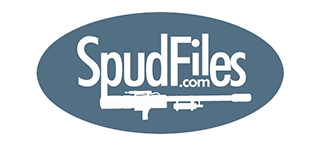Thu Jul 24, 2008 9:10 pm
One problem with this setup is that there is a good chance that the first switch will not have opened back up before the second switch closes.
Lets see, smallish spudgun firing at 300 FPS. Switches 1 foot apart. Time between switches 0.033 seconds. I doubt the spring in the switch will open it that fast. At 1000 FPS the time interval would be 0.001 second. No way the first switch can open that fast. So, chances are that you won't be able to see the second switch close because the first switch will not have had time to open.
You could get a bit fancier and do as starman suggested, use a pair of capacitors and a pair of resistors so that the switch closures cause a voltage spike of much shorter duration than the actual time the switch is closed.
Or, you could use the two stereo channels of the sound card, one channel for each of the switches. That way it doesn't matter if the first switch is still closed when the second switch closes.
A couple of phototransistors or CdS photocells seems a lot easier, just as cheap, and much more flexible. (It would be tough to measure a very small projectile, like a BB, with mechanical switches.)
BTW, the signal you get with mechanical switches won't be a nice square wave, the contacts will bounce and the signal will have a fair amount of noise in it. Not a big deal really since you only care about the first rise (or fall) in voltage.
BTW2, you are right (if I'm understanding what you said), the battery would not be needed if you use the MIC input to your soundcard. The MIC input is mono and powered but usually uses a stereo (3 conductor) plug. You would have to check if the power is on the plug's tip or ring connector. If power is on the tip then the switches should connect the tip to ground. If the power is on the ring then the switches should probably connect the ring to the tip. (Usually only the line input is stereo, and uses a stereo plug. The line input is unpowered so it'll need the battery.)
BTW3, "usually homemade chrono uses two microphones and paper or metal targets" Around here photodetectors are a bit more common than the audio methods though both are used. Commercial shooting chronometers are generally photodetectors. For an audio based spud chronometer the paper is generally omitted and the round is just bounced off a hard surface like a board. The muzzle noise of most spudgun is generally so loud, and there is rarely any sound before the muzzle noise, that paper at the muzzle is not needed. Given the size of most spudgun projectiles, the paper at the end of the range isn't needed either, just a hard surface.








